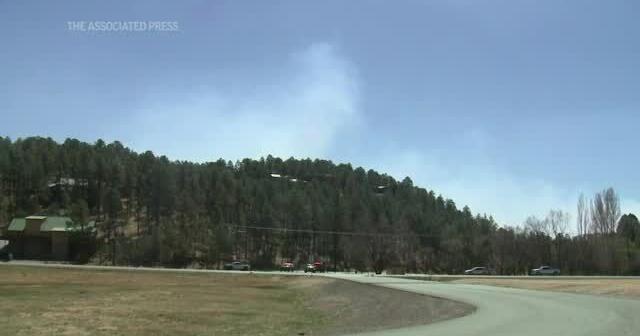New Mexico’s rivers were recently named most endangered rivers in the country, but Audubon Southwest is working with partners to help improve the health and water in our rivers.
The national non-governmental organization American Rivers has been listing endangered rivers annually for years in a way to highlight priority actions needed to address the health of our nation’s most imperiled rivers. New Mexico rivers have been highlighted in recent years including the Rio Gallinas (2023), Pecos River (2021) and Gila River (2019, 2014). This year New Mexico holds the number one spot, and it’s not just for a single river, rather all our rivers. This is the first time American Rivers has listed an entire state’s rivers as being “most endangered,” and it highlights the vulnerability of our rivers to pollution and dewatering as the result of the May 2023 U.S. Supreme Court opinion in the case of Sackett v. Environmental Protection Agency.
Sackett v. Environmental Protection Agency
The “Sackett” case reintroduced the question of what constitutes protected “waters of the U.S.,” defining these as “a relatively permanent body of water connected to traditional interstate navigable waters.” This definition leaves desert streams and wetlands vulnerable.
Audubon Southwest partnerships to protect the rivers
A number one spot in the American River’s endangered rivers list is a wakeup call for our rivers. Through our partnerships with other non-profits such as Amigos Bravos, we advocate for the development of a state-base surface water-quality permitting program that would help buffer the protection of our streams from pollution and dewatering that will result from lax federal standards.
Audubon Southwest is focused on activities that improve the health and water in our rivers—an activity that was direly needed even before the recent Sackett ruling. We focus on both policy initiatives and on-the-ground projects to protect our beautiful yet vulnerable rivers. For example, we have been defining and protecting the water needs of the Rio Grande in New Mexico along with a collective of other environmental non-governmental organizations in support of the Rio Grande Basin Study in New Mexico (Basin Study). A scientifically defensible framework for defining and protecting environmental flow targets in the Rio Grande of New Mexico is long overdue. Aridification (less precipitation) is increasing across the American West, exacerbating existing water management challenges, and increasing conflict among competing water uses as water availability diminishes. The Basin Study was initiated on January 24, 2023.
The Basin Study is a WaterSMART-funded initiative led by the U.S. Bureau of Reclamation and the Middle Rio Grande Conservancy District, with the participation of more than 36 signatories representing multiple sectors and areas of expertise. The Basin Study aims to develop management resiliency strategies for the Rio Grande in New Mexico under climate warming scenarios. As part of this effort, water-use “sectors” are quantifying water needs that will be placed into tradeoff models and tools. The non-governmental organizations (NGO) Sectoral Committee of the Basin Study, co-led by Audubon Southwest and New Mexico Wild, is comprised of 12 national, regional, and statewide environmental organizations as well as associated partners. The NGO Sectoral Committee is embracing this opportunity to quantify environmental flow needs and associated feasible targets for the Rio Grande in New Mexico.
Through this NGO collective, we are defining how much water the Rio Grande needs in six reaches of Rio Grande and Rio Chama in New Mexico. These flow targets are being compared against current conditions and future predicted conditions to understand how much water is needed in each reach and when this water is needed most.
The understanding of these “environmental flow deficits” is being used to compile tested strategies and develop new strategies to keep our Rio Grande Through the engagement of our NGO partners, we have collectively developed a network of informed and ready-to-fix-it environmental flow practitioners. Many of these groups are directly engaged with on-the-ground activities that are improving river flows as you read this. This network is paired with a similar coalition that is focused on policy fixes to improve the stream flow of our rivers.
In the face of grim climate predictions and unfavorable court rulings, our New Mexican river-protector community has never been so engaged with finding on-the-ground solutions as well as policy fixes. It is through these deep-reaching partnerships that I hold hope for the future of New Mexico’s rivers.
































